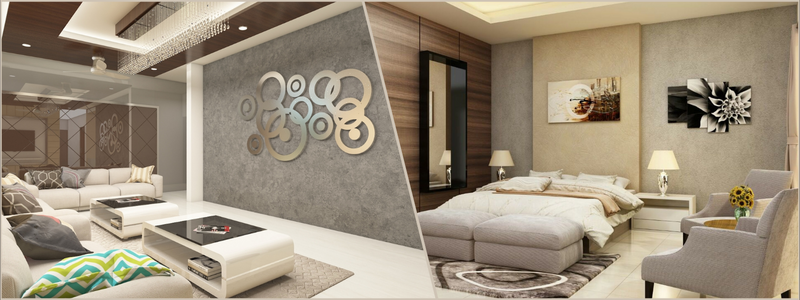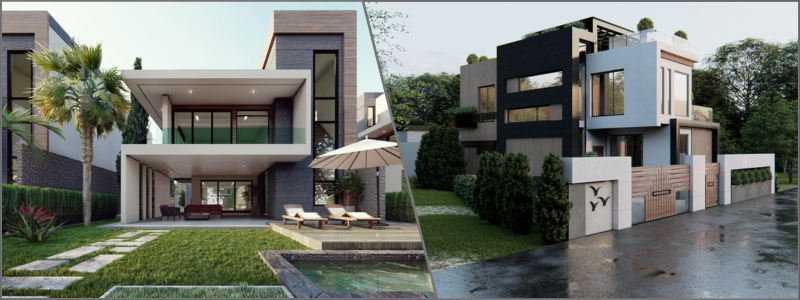Your visual approach can easily make or break any architectural project. If you want your project to get off the ground, other people should be able to understand your vision.
Your ideas will become more effective if you showcase them clearly and interactively. This is where photography and 3D rendering options come in handy.
But is photography or 3D rendering a better option? Which should you use for your upcoming architectural projects?
- Differences between freelance 3D rendering options and photography
- Benefits of freelance 3D rendering options and photography
- How to choose between freelance 3D rendering options and photography for your architectural projects
- When to use freelance 3D rendering options, photography, or both
- How Cad Crowd can help
Differences between freelance 3D rendering options and photography
Many brands are investing in eye-catching and stunning project images, project videos, collateral, and brand visuals. Once again, however, the main question remains: what makes freelance 3D rendering service options different from photography? Here are a few fundamental differences you should know:
RELATED: What is architectural visualization and why architectural rendering services use it
Eliminate limitations on creativity
Marketers now have freedom in terms of creativity when promoting their projects. They can utilize their aesthetics to develop photorealistic and detailed image renders using advanced 3D rendering software.
Efficiently do adjustments and edits
3D rendering options are easy and quick to adjust without significant construction costs. You can tweak the views or angles as often as you need at any given point without the need to do everything from the ground up.
3D rendering technology allows for easy adjustments to a designer’s rendered images. The 3D architectural rendering designer can even add various backgrounds or completely redecorate the ambiance after completing the renders.
With traditional photography, customizing is more time-consuming and challenging. Even though you can find several tools for photo editing online, retouching and editing require expertise and precision. If there is a need to make any changes during the development stage, it requires doing the photo shoot all over again with extra costs incurred with the final version.
Develop better marketing graphics
When project photos are rendered in 3D, marketers can promote and showcase their projects when they are still in development, even before manufacturing. It is an excellent choice for architectural projects and brand owners, such as apparel designers, luxury car makers, fashion designers, etc. These 3D renders can be used to communicate ideas, create hype, and gain the project interest of the target audience.
Showcase project details and features
Highly detailed rendered images developed by 3D experts can give 360-degree and multi-angle views of the project. They can also generate virtual walkthroughs or tours for architectural projects to help potential buyers make more educated buying decisions. For this reason, 3D rendering options can boost listings significantly thanks to the accurate details of the displayed images. Traditional 2D photographs can’t capture a project’s accurate details, such as measurements, proportions, alignments, etc.
Enables faster production
One of the most significant advantages of freelance 3D rendering over traditional photography is the shorter time needed to complete 3D renders. Marketers often feel a sense of urgency when launching their projects, which can tighten production deadlines. Hiring freelance 3D rendering artists is the best idea because they can quickly produce digital models and render them quickly to save time.
Traditional photography is time-consuming and can get quite pricey in comparison.

Showcase projects with conceptual and lifestyle backgrounds
Another practical part where 3D rendering options win the game is the conceptual presentations and unlimited lifestyle shots. Professional 3D designers are also experts in producing 3D lifestyle renders that can showcase projects complete with lifestyle scenes. These professionals are also skilled in creating white background renderings that most platforms favor.
CGI images can effectively display every angle of the project, depict what they would look like compared to the real-life surroundings of the potential buyers, and increase the chances of project approvals. Trying to achieve the same thing with conventional photography may incur more expenses and require more resources and workforce but with a limited scope of additional customizations.
RELATED: Learn about the types of architectural rendering services available for your company
Benefits of freelance 3D rendering options and photography
Now that you know the differences of these two, take a look at the specific benefits they can offer:
Freelance 3D rendering options:
1. Improve marketing efforts
Since you can start showcasing images earlier in the process, 3D renders allow you to communicate your concepts and ideas and spark interest in your architectural project. The project can also be marketed even while it is still in the development phase.
2. Allows easier revisions
The 3D rendering technology allows the 3D architectural visualization professional to adjust lighting, make quick changes, meet deadlines, or completely revamp your decoration options. You have complete control over the rendering and easily pivot when necessary.
3. There are no limits to the designs
Lighting, geography, and construction shouldn’t hinder you from creating gorgeous professional images to impress team members and clients. With the right software and vision, you can make 3D renders immediately.
Photography:
1. Authentic
Even though 3D rendering images often have the same quality as professional photos, some viewers might feel more inclined to choose photographs instead of digitally rendered images.
2. Excellent finishing touches
After the project is completed, professional photography is an outstanding final step for capturing the architecture and all its best angles.
RELATED: Real estate marketing: advantages of 3D architectural rendering services & animation
3. Provide different looks
Your new project might look different during sunset and in the middle of the day. The view from one part of the room may also evoke a different mood than other angles. Photography offers flexibility as you can play around with different times of the day and various angles to showcase the entire space in its glory.
How to choose between freelance 3D rendering options and photography for your architectural projects
If you’re still unsure of what to choose between photography and freelance 3D photorealistic rendering options, there are several factors you should know and remember.
Authenticity
If your topmost priority is real-life appearance, photographs can capture reality in ways that many 3D rendering options cannot. However, even though 3D rendering options can’t take a snapshot of real-world environments, they can still present impeccably realistic images. Even the most trained eyes won’t be able to distinguish between 3D renderings and real photos.

Flexibility
Freelance 2D rendering options let you make adjustments, change angles, or retouch your building at any given point during the process. On the other hand, photography offers a very limited scope for playing around with. If you expect to make changes during the entire process, 3D rendering options can provide more options for customization.
Time
Do you still have a lot of time before your project presentation? If not, you can always turn to 3D rendering. Architects and architectural design experts can use advanced technology to produce renderings quickly and allow faster production time compared to photography shoots and edits. Freelance 3D rendering options also let you present stunning images early in the process. Different from photography, where you need to complete the interior design and building processes, 3D renders allow you to showcase your vision before you’ve completed your finishing touches.
RELATED: Why are companies and firms moving from 2D to 3D CAD architectural renderings and models?
When to use freelance 3D rendering options, photography, or both
Below are several best practices on how to incorporate freelance 3D rendering options and photography in your next architectural projects in the future:
Pre-construction:
- Create several renderings that emphasize different details
- Confirm a set of approved renderings that will serve as a guide during construction
- Refine the designs according to feedback from stakeholders
- Use quality 3D rendering software exclusively throughout the initial design stages
During and after construction:
- Capture more wide images that showcase the entire architecture
- Capture photos of completed project interiors and exteriors
- Take photos of the render angles once again to present the design implementation
- Capture more detailed close-up photos of unique components, finishes, and fixtures
For promotion and marketing:
- Take advantage of professional photography to draw attention to the success of the project
- Use renderings to convey the story behind the design
- Feature side-by-side comparisons of photos and matching 3D renderings
The strategic combination of quality freelance 3D rendering options and photography can give you the best of both worlds when it comes to 3D architectural visualization services.
How Cad Crowd can help
Cad Crowd can link you up with the best freelance 3D architectural rendering designers who can help you showcase the full potential of your next architectural projects. Start with a free quote today.

Your insights on cost considerations are really helpful! Freelance 3D rendering can sometimes offer a more budget-friendly option for visualizing unbuilt projects, while photography is essential for showcasing completed works.